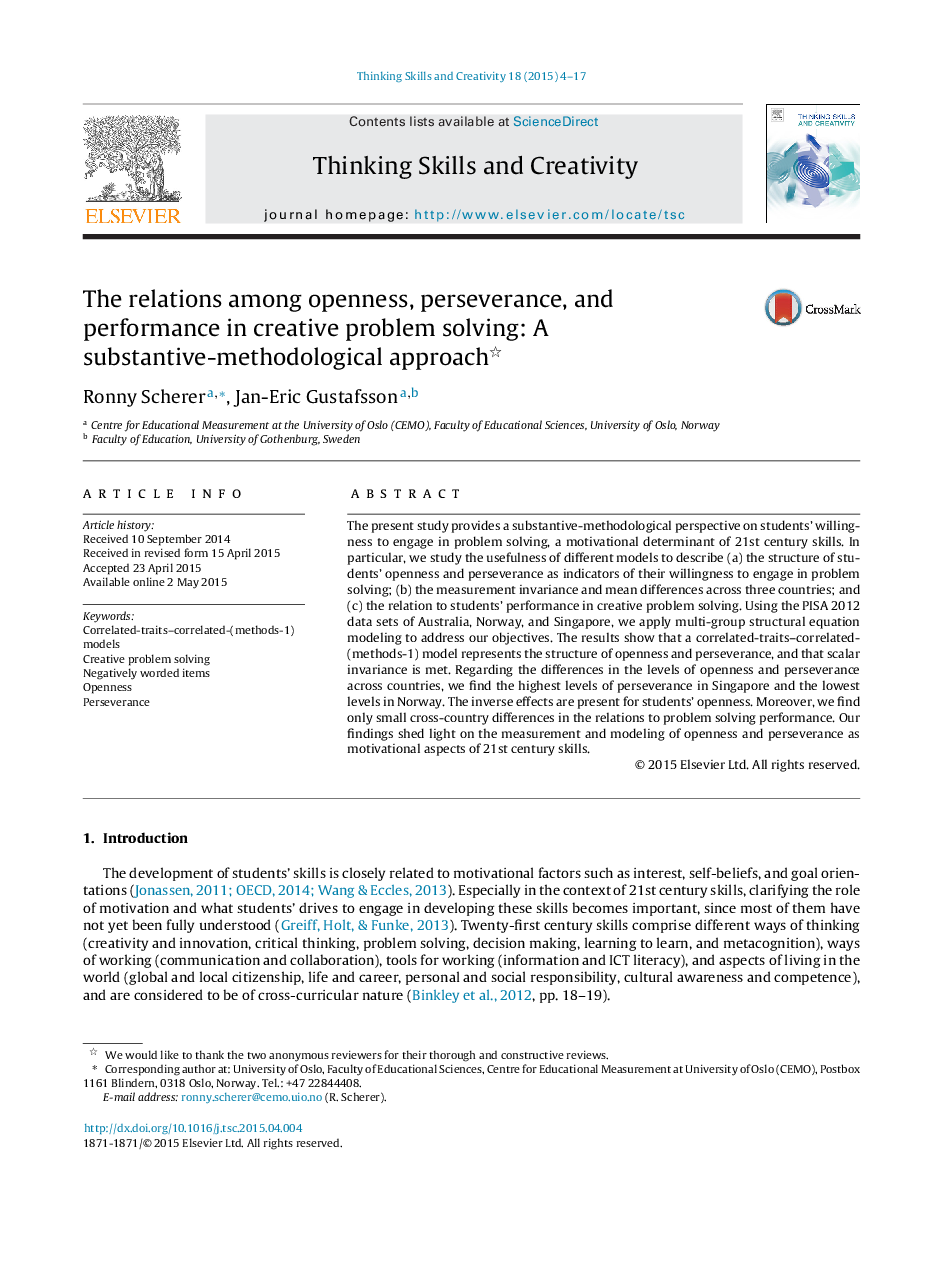| Article ID | Journal | Published Year | Pages | File Type |
|---|---|---|---|---|
| 375533 | Thinking Skills and Creativity | 2015 | 14 Pages |
•Openness and perseverance in problem solving are positively related (ρ = .47).•Negatively and positively worded items of perseverance can be distinguished.•A CT–C[M-1] model shows strict invariance across countries.•Openness and perseverance are related to creative problem solving (r = .25–.36).•The method factor is not substantially related to creative problem solving.
The present study provides a substantive-methodological perspective on students’ willingness to engage in problem solving, a motivational determinant of 21st century skills. In particular, we study the usefulness of different models to describe (a) the structure of students’ openness and perseverance as indicators of their willingness to engage in problem solving; (b) the measurement invariance and mean differences across three countries; and (c) the relation to students’ performance in creative problem solving. Using the PISA 2012 data sets of Australia, Norway, and Singapore, we apply multi-group structural equation modeling to address our objectives. The results show that a correlated-traits–correlated-(methods-1) model represents the structure of openness and perseverance, and that scalar invariance is met. Regarding the differences in the levels of openness and perseverance across countries, we find the highest levels of perseverance in Singapore and the lowest levels in Norway. The inverse effects are present for students’ openness. Moreover, we find only small cross-country differences in the relations to problem solving performance. Our findings shed light on the measurement and modeling of openness and perseverance as motivational aspects of 21st century skills.
